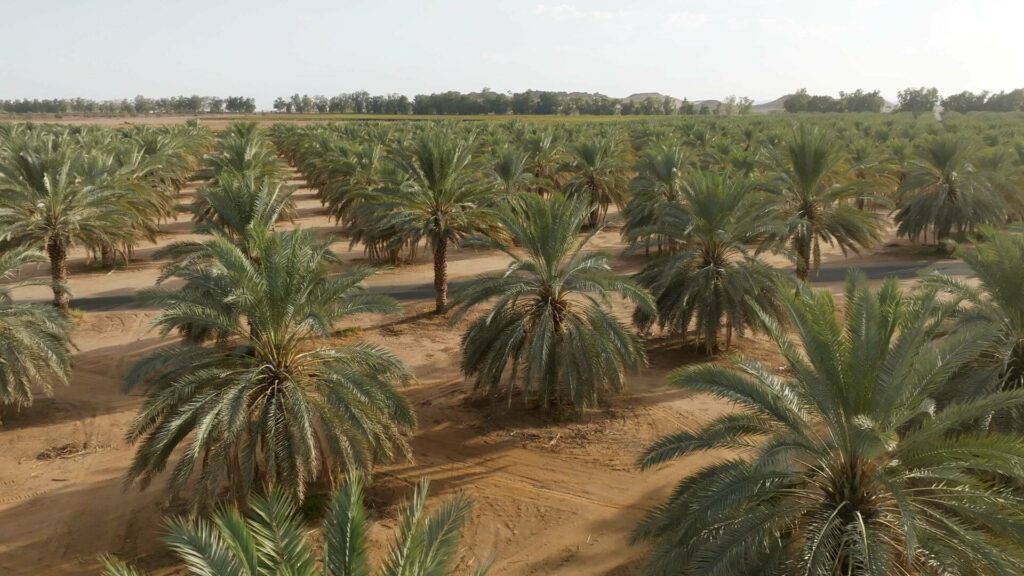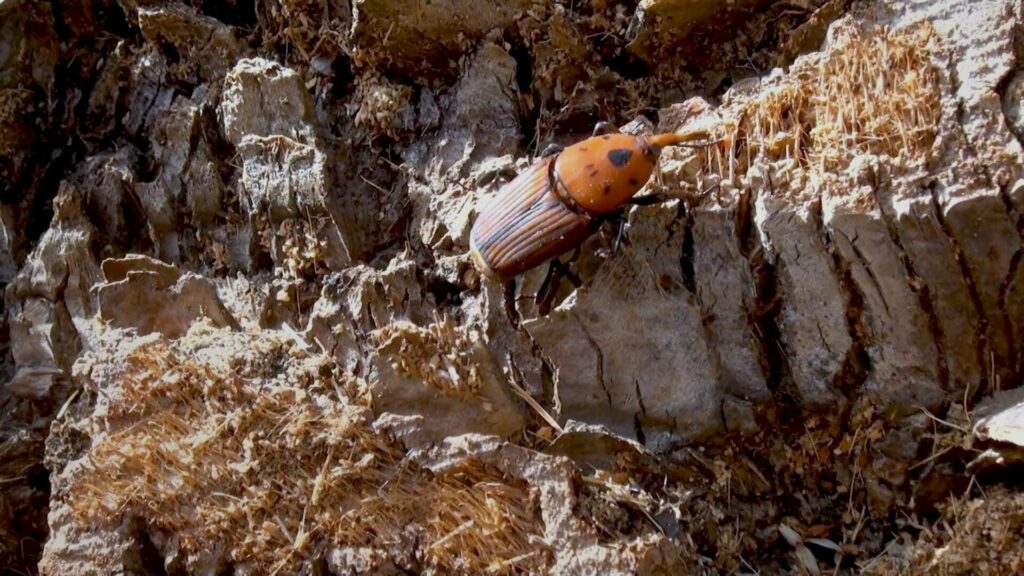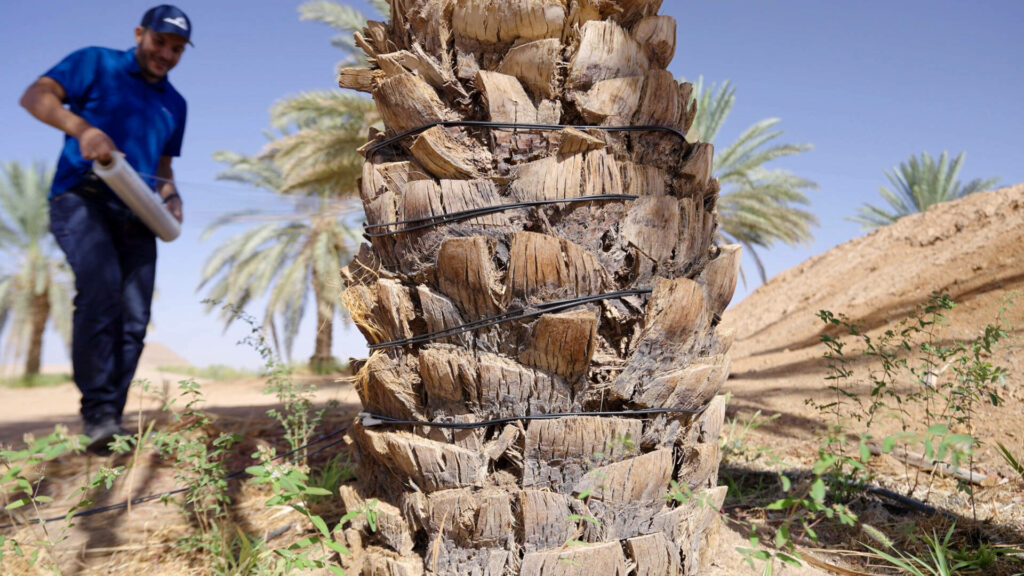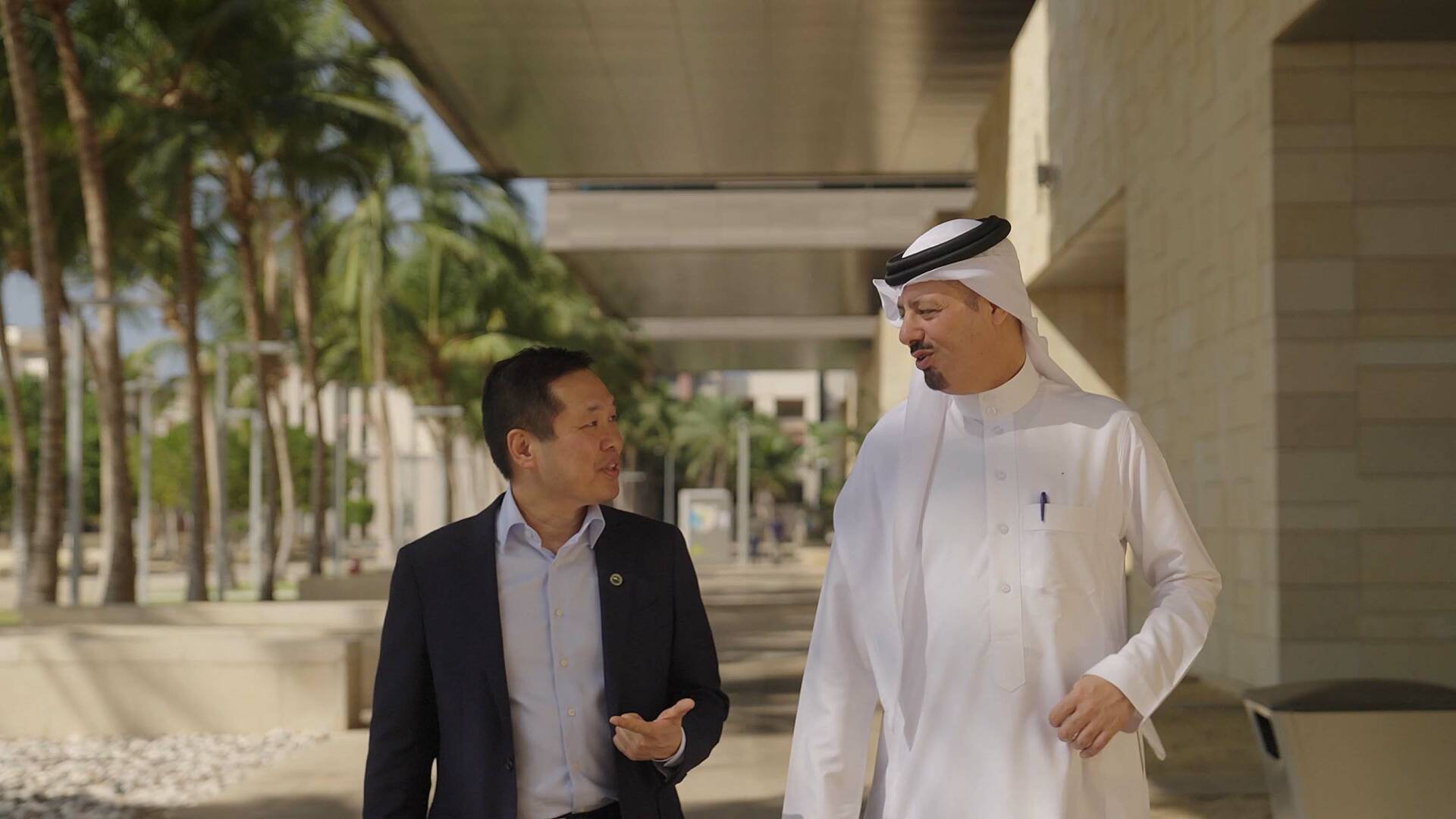The KAUST Insights for National Priorities series highlights some of the impactful collaborations between KAUST and its national partners to help realize the priorities of the Kingdom.
Saudi Arabia’s Ministry of Environment, Water and Agriculture needed help. Now a collaboration with KAUST could help arrest the progress of a deadly pest.
Islam Ashry recently undertook a field trial in north-western Saudi Arabia that is likely to have implications for the Kingdom’s date industry. Ashry, a research scientist at KAUST, spent a week collecting data from an optical fiber wrapped around many date palms at TADCO farm in Tabuk. The aim was to detect what one Saudi official called a hidden and deadly enemy.
The red palm weevil (Rhynchophorus ferrugineus) arrived in Saudi Arabia from tropical Asia in the 1980s, most likely on a cargo ship. This tiny beetle has had a long reach, spreading to Europe, North Africa, the Caribbean and Central America, infesting palm trees and leading to millions of dollars in economic losses.

“Anyone working in date palm agriculture is preoccupied with the red palm weevil,” says Abdul Moneim Al-Shawaf, head of plant protection at Saudi Arabia’s National Center for Palms and Dates. “Before this bug arrived in Saudi Arabia, insect infestations were few and manageable. Now, palm trees face certain death unless the infestation is discovered early in the insect’s life cycle.”
“Anyone working in date palm agriculture is preoccupied with the red palm weevil.”
Al-Shawaf explains that a single bug lays an average of 200 eggs that hatch inside the palm’s trunk within three days. The hatched larvae munch on the tree’s insides, and if not caught in their very early stages, the bugs kill the tree and spread to its neighbors.
A difficult and dangerous adversary, as Al-Shawaf describes it, the red palm weevil has become resistant to pesticides, so Saudi Arabia’s Ministry of Environment, Water and Agriculture (MEWA) called on the Kingdom’s researchers to lend a helping hand.

KAUST faculty Boon Ooi led a team to use sensing technology that was deployed by Saudi ARAMCO to monitor deep oil and gas drill pipes for fluid movement and leaks. They thought they might be able to adapt it to detect the weevil.
They began tests at a MEWA farm in the eastern province of Al-Ahsa, where Al-Shawaf works. The MEWA farm had a controlled laboratory infrastructure for Ooi’s team to record and learn how to detect the munching sounds of 12-day-old larvae.
They applied their device, called a distributed antenna system (DAS), to detect the larvae. The device sends laser pulses into an optical fiber wrapped around a palm trunk. The sounds made by munching larvae disturb the light’s frequency, referring this information back to the sensor that records the change.
If only it were that easy.
Palm trees grow in the outdoors in open farms, surrounded by all sorts of sounds from animals, humans and the environment. To succeed, KAUST’s device needs to be able to filter out all this noise and hone in on specific sounds made by the larvae.

“The sensor worked well in the lab, but it was more challenging in the open-air farm,” says Al-Shawaf. “As soon as the winds picked up to 9-14 miles an hour, it struggled.”
So the KAUST team brought in artificial intelligence.
They developed a machine learning algorithm that can be taught to distinguish the munching noises from other sounds.
Having fine-tuned their device, they have installed optical fibers at the TADCO farm in Tabuk, funded by NEOM, a smart city under construction on the Red Sea coast. Data gathered by their sensor is helping teach the algorithm to better filter out noise. Soon, they will install their system in two more locations in Saudi Arabia.
“This project opens up new applications for us as researchers working in science and engineering,” says Boon. “The technology is very scalable and can save lots on costs in the long run. It is also much more sensitive than the detection approaches currently used on farms.”
“The technology is very scalable and can save lots on costs in the long run.”
Those approaches are either impractical, involving sticking listening probes into individual trees; very expensive, using computerized tomography scans; or not sensitive enough, when using sniffer dogs. The KAUST sensor, however, can be in a roaming vehicle to pick up signals from the optical fibers surrounding thousands of trees.

Al-Shawaf doesn’t want to get too excited just yet. “The device as a concept is excellent,” he explains. “We’re currently testing its effectiveness and in future phases, we will focus on its real-life application.”
There is lots of potential. The technology is already used in the oil and gas industry and KAUST has launched a spin-off company, called AK-Sens, to commercialize it. It could also be used for other applications: earthquake detection, infrastructure and wind turbine monitoring, and even homeland security.


